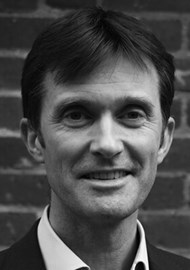Bilateral vocal fold paralysis is a difficult condition to manage, with surgical interventions previously limited to tracheostomy or arytenoidectomy. Re-innervation surgery has been developed and, in recent years, a Laryngeal Pacemaker is now in clinical trials. We speak to two of the members of the team working on this project.

Prof Andreas H Müller and Stefan Kabas.
Can you tell us about the patients who might benefit from the Laryngeal Pacemaker?
Andreas Müller: Most bilateral vocal fold paralyses (bVFP) are iatrogenic. The affected patients are understandably concerned about undergoing surgery once anew and accepting not only breathing problems but also permanent harm to their voice, which is not unavoidable with standard therapy. A dynamic therapy approach that promises partial restoration of vocal fold mobility is very attractive for these patients.
Stefan Kabas: The MED-EL Laryngeal Pacemaker represents a pioneering advancement in the treatment of patients with bVFP. Designed specifically for adults with misdirected or pathologically reinnervated larynges, this innovative device offers a dynamic solution to address the challenges of bVFP. Our device, which is patent protected, is the first of its kind to be developed for this indication.
AM: One of the key benefits of this therapy is its minimally invasive nature, ensuring no harm to the vocal folds. Unlike traditional procedures such as glottic enlargement (e.g. cordotomy), the implantation of the Laryngeal Pacemaker is entirely reversible. Compared to selective reinnervation with a phrenic nerve graft, implantation of a Laryngeal Pacemaker is comparable to standard ENT surgery in terms of the surgical time required, which can also be considered for older patients and those with comorbidities.
SK: For individuals with bVFP, everyday tasks such as climbing stairs or engaging in phone conversations can be a challenge. With the introduction of the Laryngeal Pacemaker, we anticipate a transformative improvement in their quality of life. Our goal is to empower patients to overcome these challenges, regain their independence, and potentially reintegrate into their professional lives.

The Laryngeal Pacemaker. © MED-EL.
"Designed specifically for adults with misdirected or pathologically reinnervated larynges, this innovative device offers a dynamic solution to address the challenges of bVFP"
How long has this project been running? Who is involved?
SK: The research and development of the Laryngeal Pacemaker has been ongoing for over a decade, reflecting the extensive investigations needed to create an entirely new innovation. Fundamental questions needed to be addressed, such as whether to stimulate nerve or muscle, the potential issue of muscle fatigue, and determining the optimal stimulation parameters.
Acknowledging the work of pioneers in neurolaryngology, including Prof Zealear, Dr Dedo, Dr Crumley and Dr Sanders from the US, as well as Prof Bergmann from the former German Democratic Republic and Prof Zrunek from Austria, is essential. Their contributions in the 1980s and later laid the foundation for our endeavours. Our team of researchers at MED-EL have fostered collaborations with other renowned researchers and ENT specialists to further advance the field. The perseverance and dedication invested in this endeavour has led to a breakthrough.
After an intensive basic research and development phase, we have now progressed to the clinical trial stage. Our commitment, coupled with the invaluable support of early clinical partners such as Prof Müller from the SRH Clinic in Gera, Prof Pototschnig from the University Clinic in Innsbruck, and Prof Hagen from the University Clinic in Würzburg, has been instrumental in reaching this milestone.
MED-EL obviously has experience in the area of hearing implants; how has this helped in your work on the Laryngeal Pacemaker?
SK: The innovation and research spirit of MED-EL has certainly underpinned the drive to create another breakthrough product. Our expertise in hearing implants, particularly our focus on long-term reliability, atraumatic electrode design, and patient-centred care has been invaluable for the development of the Laryngeal Pacemaker. Using our experience and drawing inspiration from other medical areas, we have developed a new type of electrode, which is specifically engineered to withstand the stresses imposed by the daily movements of the human neck. Remarkably, our longest-running Laryngeal Pacemaker implant has already surpassed 11 years of use.In essence, while our pioneering work in the hearing implant field provided a foundation, significant adaptations were necessary to tailor the technology to this new Laryngeal Pacemaker application.
How far advanced is the research? Are you in clinical trials with human subjects?
SK: The research phase for the first generation of the Laryngeal Pacemaker has been successfully completed, and we have now progressed to the clinical trial stage. Currently, two studies are underway in Germany and Austria. To date, 17 patients have undergone implantation with more scheduled for the near future. Once the outcomes of these trials are evaluated, the results will be reported. It is important to note that the product is not yet commercially available.
Thank you both for sharing these exciting developments with us – we look forward to following the progress of the clinical trials.







